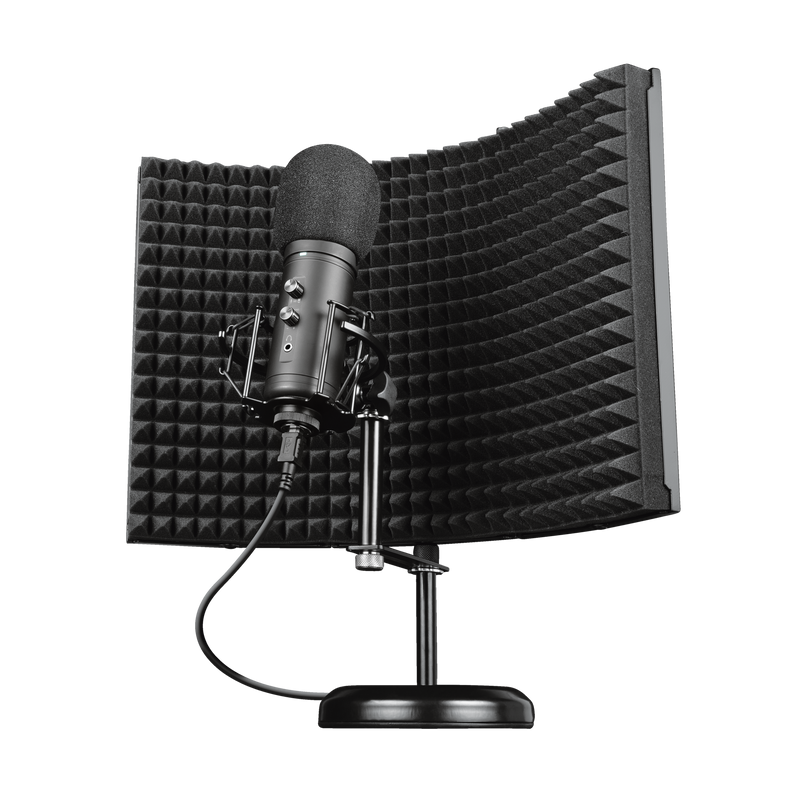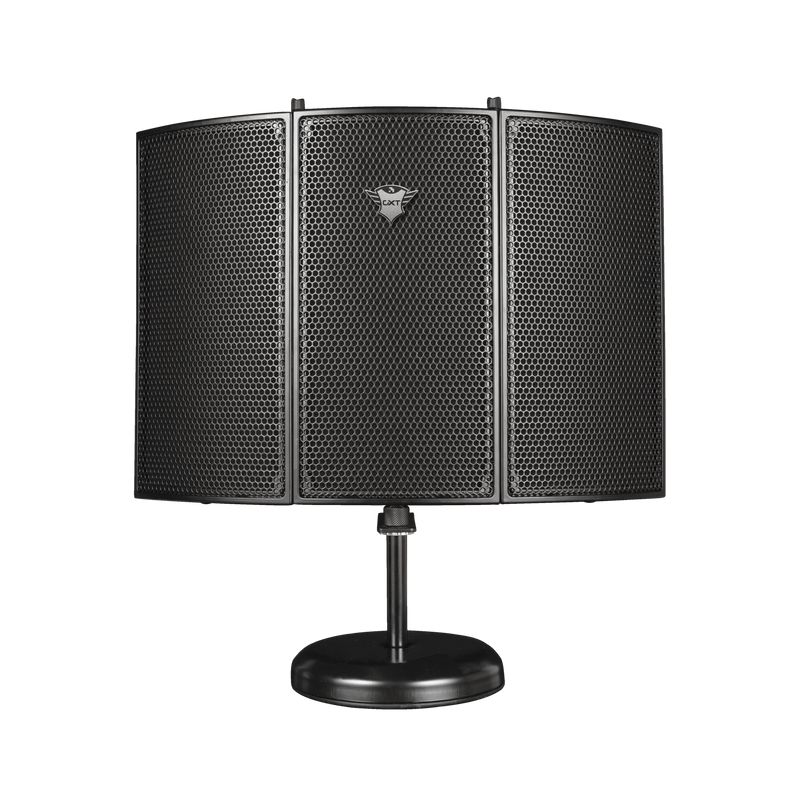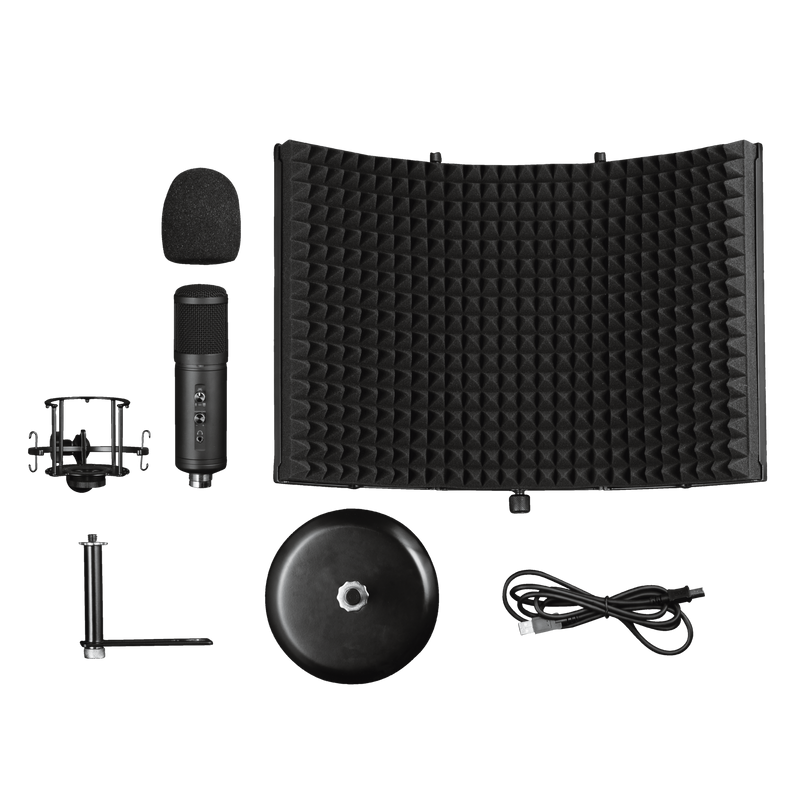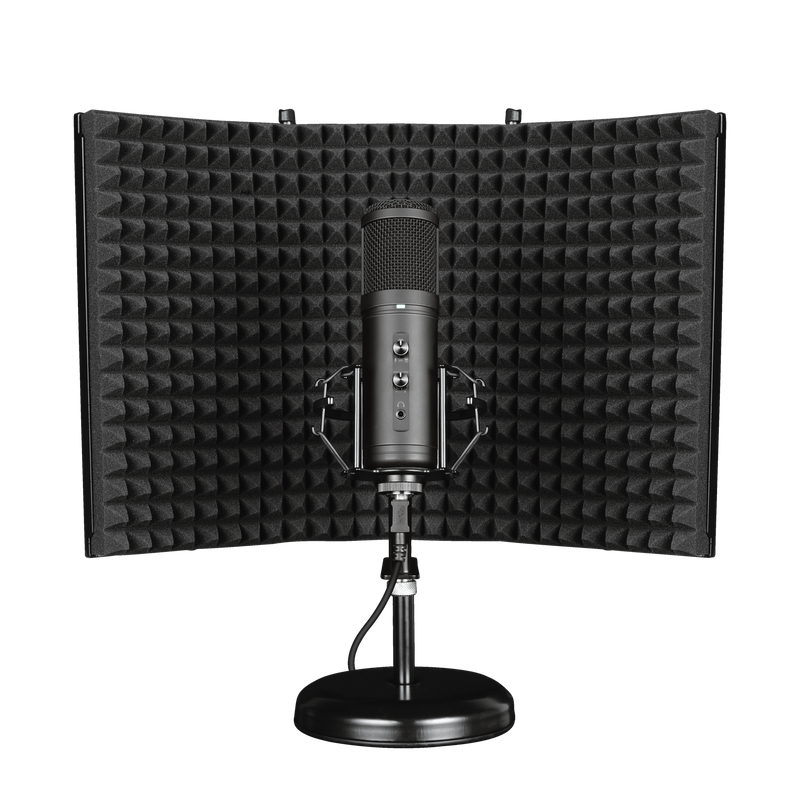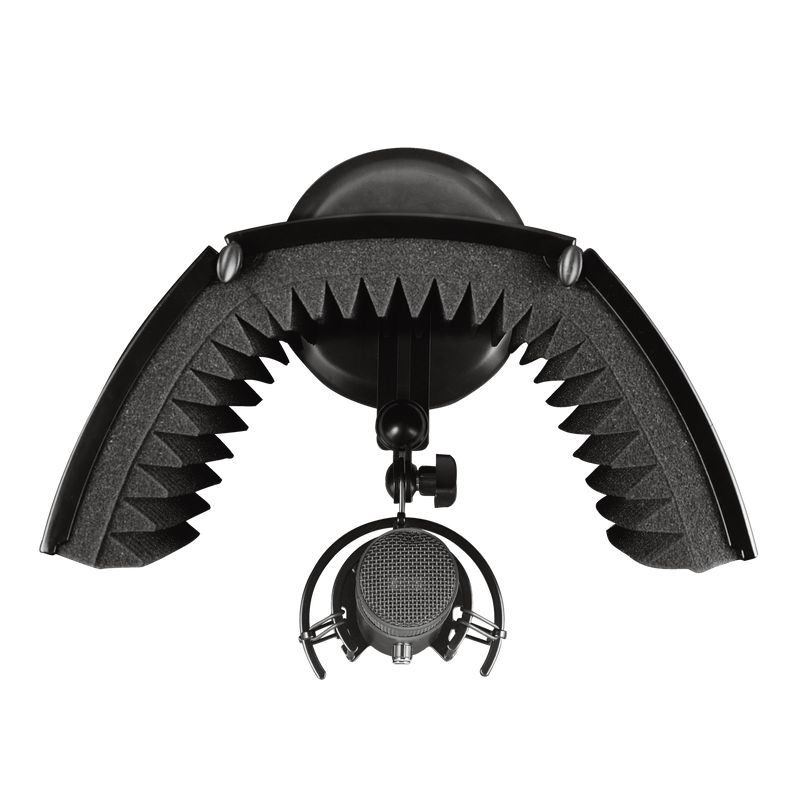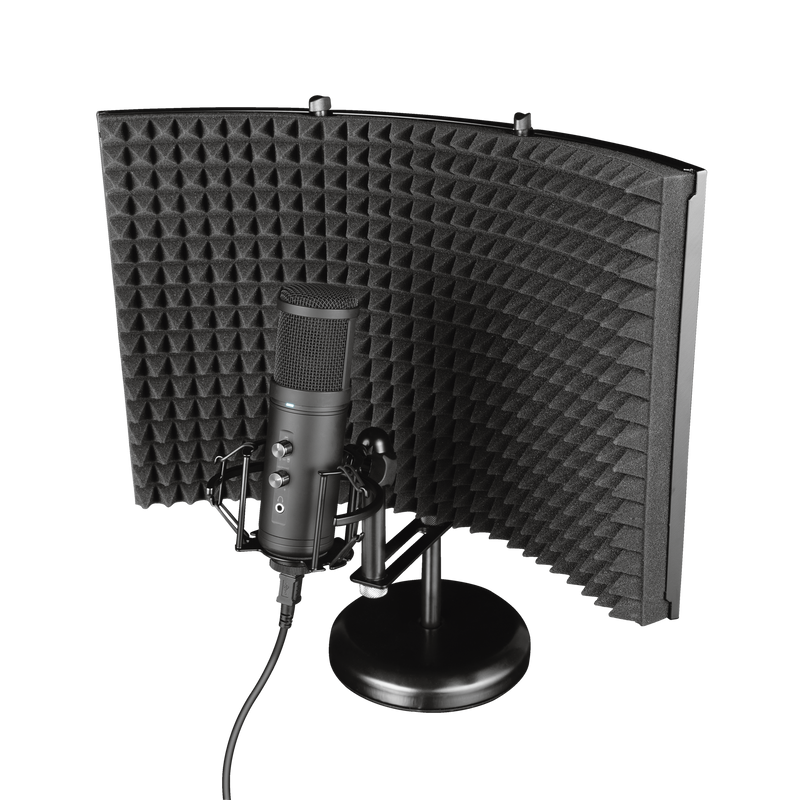GXT 259 Rudox
Professional setup including microphone and reflection filter for studio quality recordings
Studio-quality audio
From making podcasts to documentaries, from singing pop songs to your magnum opus; you’ll need a great microphone to capture the audio in the best possible quality. The Trust GXT 259 Rudox, with its large reflection shield, zero-latency monitoring and cardioid audio pattern, gives you everything you need to start recording studio-quality audio.
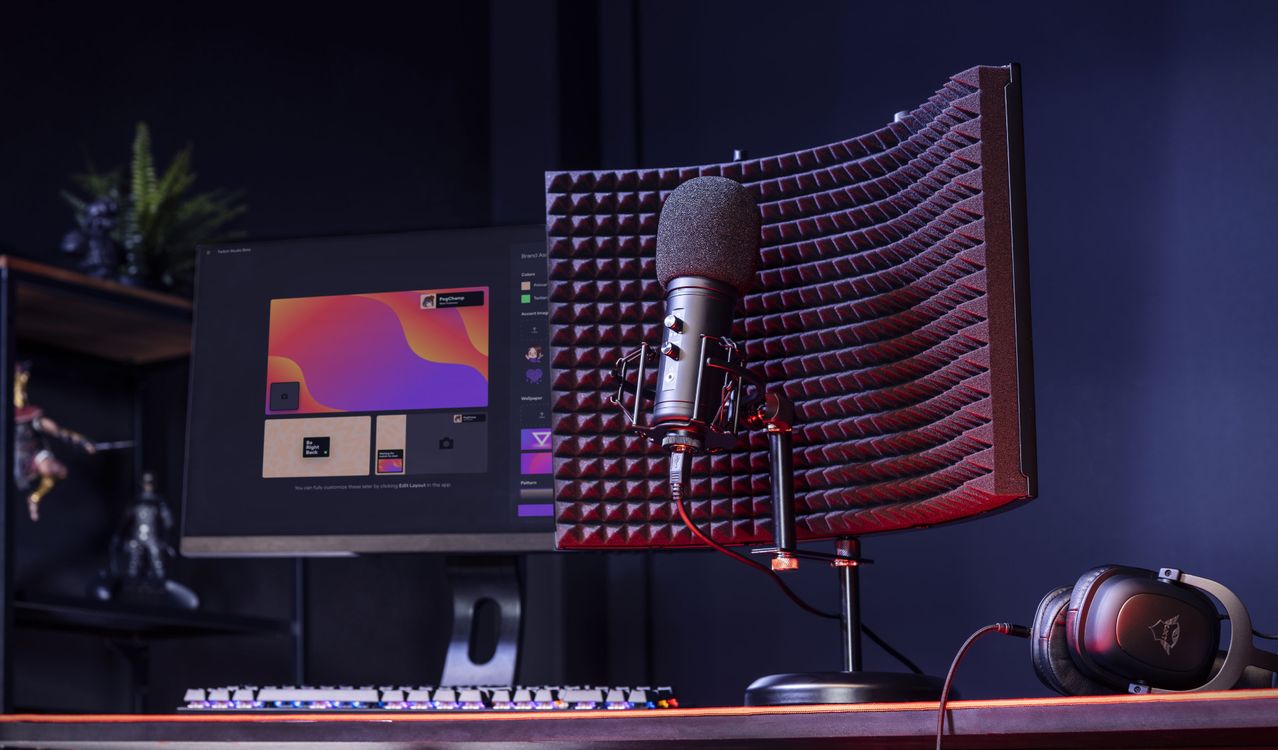
Key features
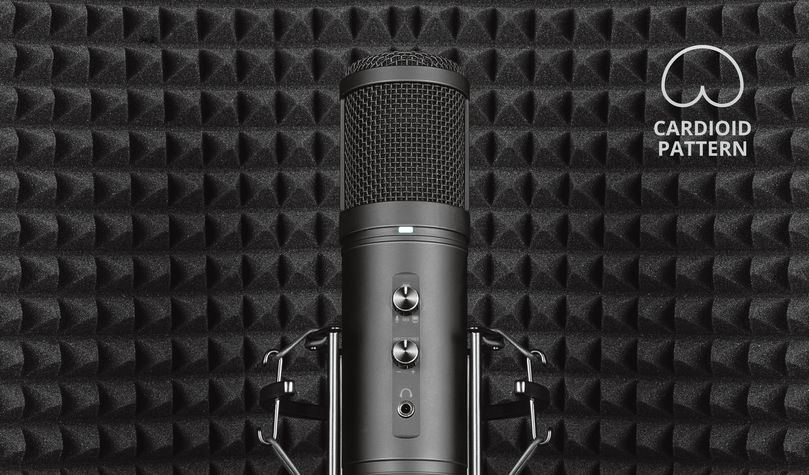
For Content Creators
The Trust GXT 259 Rudox is made for every type of content creator. Thanks to the cardioid pattern, background noise is reduced, which makes this microphone suitable for podcasts, voice-overs or livestreams. Sing your own songs and play acoustic instruments and the Rudox will record every sound you make in the highest possible quality.
Reflection Shield
By placing the reflection shield behind the microphone, echoes are reduced, making this the ultimate studio set-up for anyone that wants high-quality voice recordings. The panels of the reflection shield can be adjusted to your liking, as the entire unit stands firmly on the heavy metal base with integrated shock mount. You’ll easily create a full sound studio in your room.
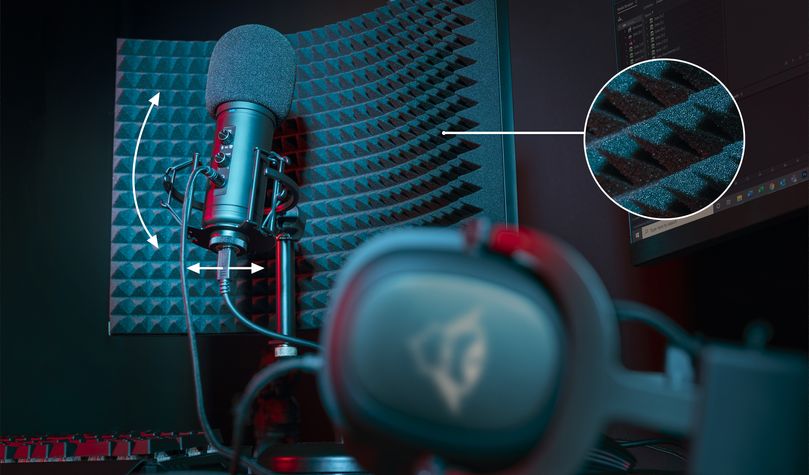
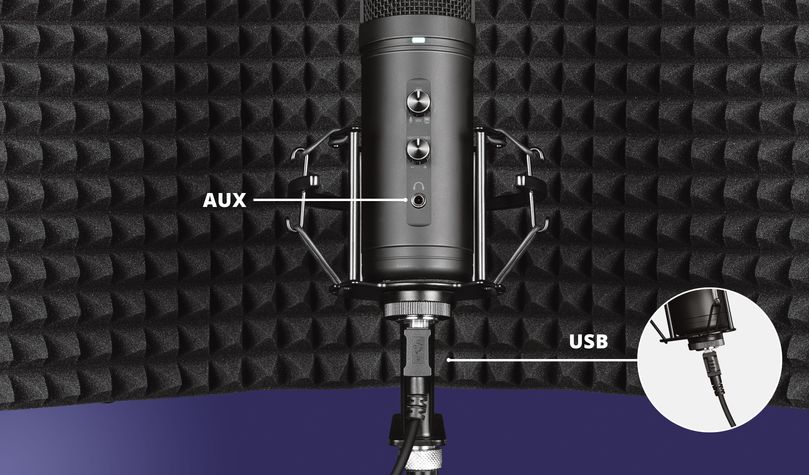
Connections
Thanks to the USB connection, audio is recorded in full digital quality. There’s no need for an external mixer; all you need is a PC or laptop with a free USB port. Monitoring your voice is made easy with the integrated headphone jack that provides zero-latency audio monitoring. The moment you say it, you’ll hear it. Combine this with the mix control and mute buttons and you’ve got full control over your studio recordings.
Specifications
Features
Size & Weight
General
Control
Connectivity
Audio
Microphone
Mount
Compatibility
Extra information
Microphone
Reflection filter
Shock mount
Pop filter
Metal stand
USB Cable
User guide
USB port
Windows 7, 8, 10, 11
Mac OS X 10.5 (Leopard) or higher
Downloads
Legal & Compliance information
Version 1.0 | Multilingual
Legal & Compliance information
EU declaration of conformity (DoC)
Version 1.0 | Multilingual
EU declaration of conformity (DoC)
Frequently Asked Questions (FAQ)
To install:
- Assemble the microphone and set it in your preferred position
- Connect the USB-plug to the USB-connection of the computer
- Set the GXT 259 Microphone as the default sound input and sound output device on the computer.
- Check the microphone properties and on Windows 10 the Microphone Privacy settings.
- The microphone is ready to use
You switch on/off the microphone by pressing the mute button on the front.
The LED is red when the microphone is off/muted.
The LED is off when the microphone is on.
There are 5 volume options via this microphone
- 2 buttons on the microphone:
mic volume
headset/speaker volume - 3 options in Windows:
Sound Control Panel > Playback > click on device > Properties > Levels > Speakers/Headphones
Sound Control Panel > Recording > click on device > Properties > Levels > Microphone Array
Sound Control Panel > Recording > click on device > Properties > Levels > Microphone Boost
Check both the headset volume on the computer, as well as the headset volume on the microphone itself. The headset volume button is located on the front of the microphone, right above the headset connection.
Check both the microphone volume on the computer, as well as the microphone volume on the microphone. The microphone volume button is located on the front of the microphone, right above the headset volume button.
The standard microphone volume in Windows is 2.0 dB, which should be sufficient for most purposes.
The red light indicates that the mic mute function has been activated.
When mute is activated, the buttons will not function.
Unfortunately, we do not have service centers to repair products.
A defective product should be replaced by your point of purchase during the warranty period.
We offer a 'return to retailer' warranty on our products. In case of a defect, you can return the product to your retailer with failure description, proof of purchase and all accessories. During the warranty period you will receive a replacement product from the retailer if available. For full warranty conditions you can consult: https://www.trust.com/support/warranty
The pick-up pattern of a microphone is the sensitivity to sound relative to the direction or angle from which the sound arrives, or how well the microphone "picks up" the sound from different directions. The most common types are: Cardioid, Omnidirectional, Unidirectional, Bidirectional.
CARDIOID
The most commonly used pattern is most sensitive at 0° (the front) and least sensitive at 180° (the back). This isolates it from unwanted ambient sound. You can use this for most recording applications. It is easy to get a good signal as the cardioid pattern blends out a bad sounding room, a noisy fan in the background, etc.
OMNIDIRECTIONAL
The omnidirectional microphone has equal sensitivity at all angles. This means it picks up sound evenly from all directions. Therefore, the microphone need not be aimed in a certain direction. It will be especially useful in good sounding rooms.
UNIDIRECTIONAL
Unidirectional microphones are most sensitive to sound arriving from directly in front (at 0°) and less sensitive in other directions. This makes unidirectional microphones effective at isolating the desired sound from both unwanted sound and ambient noise.
BIDIRECTIONAL
A bidirectional microphone (with figure-8 pattern) picks up the sound from in front of the microphone (at 0°) and from the rear (at 180°), but not the side (at 90° and 270°). It can be beneficial in situations where you do not want a signal coming from a 90° angle to bleed into the microphone.
Contact us
Contact us
Please check our FAQs first, chances are you'll find the answer there.
Couldn't find the answer in the FAQs? Fill out the form below with as much information as possible and one of our help-desk staff will respond at the earliest opportunity. Our messages are answered in the order they are received.
After submitting the form a confirmation message will be displayed with your reference number. The confirmation will be sent to your email address at the same time as well. If you have not received the confirmation message, please check your spam or junk mail folder. Otherwise, fill out the form again with your correct e-mail address.
